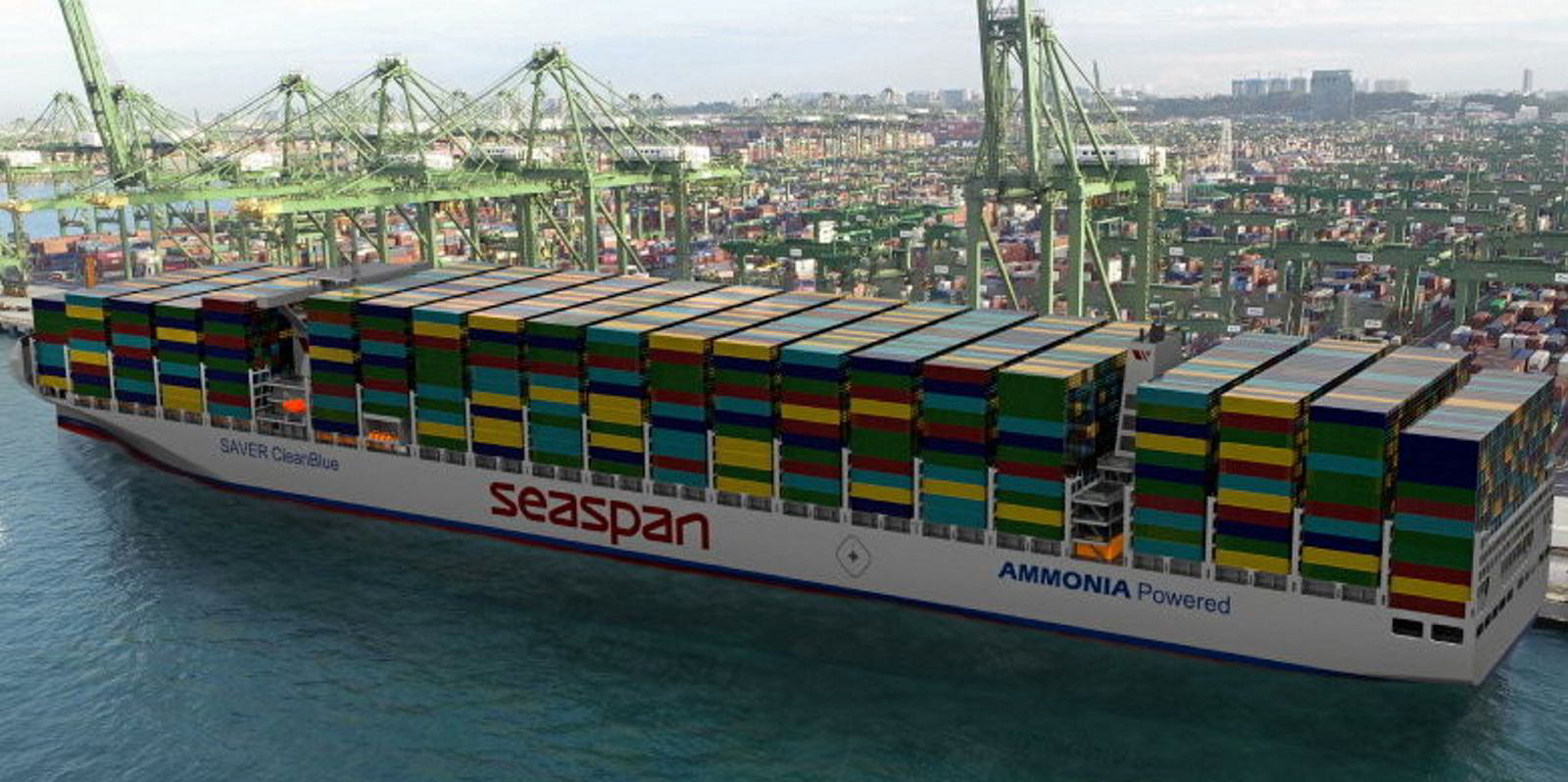Ammonia makes more commercial sense as a fuel for large vessels due to its lower energy density, designers of a new 15,000-teu container ship believe.
Giant Canadian shipowner Seaspan is working on an ammonia-fuelled neo-panamax design with Foreship and the Maersk Mc-Kinney Moller Center for Zero Carbon Shipping.
One of the lead authors of a new report on the work so far, Sebastian Brindley, an independent senior naval architect acting on behalf of Seaspan, told TradeWinds: “The size was something that we thought quite heavily about at the beginning of the project.
“I think maybe the smaller vessels would be good as a first trial, but from an economics perspective, because ammonia is a low-density fuel, we have to have very large tanks.”
From Seaspan’s perspective, a smaller vessel with a large tank means few containers.
“So that was one push for the larger one. I think for ammonia, because of the energy density, because of the toxicity, we need additional space,” Brindley said.
Thomas McKenney, head of ship design at the Maersk Mc-Kinney Center, described the work with Seaspan as unique.
“There are projects out there looking at ammonia as a fuel for large ammonia carriers in particular,” he told TradeWinds.
But he added: “For container vessels, this is the largest. That being said, it’s not necessarily the first vessel that might be out there, because when we look at the engine size, availability and so forth, similar to what Maersk did with the introduction of methanol as a fuel, they started small with the feeder.”
He sees something similar happening with ammonia.
The Maersk Mc-Kinney Moller Center is also involved in work on a feeder ship design, which might be first on the water.
But smaller ships will not be enough for shipping to reach its climate targets, McKenney said.
Environmental gains
“Large container vessels, they go fast, they consume a lot of fuel. So it’s a good place to target from an emission reduction perspective in particular,” he added.
For Brindley, the scalability of green ammonia is an important factor.
“Although right now availability is not so good, theoretically it’s just made from air and water, two of the most common elements in the world right now,” the architect explained.
“I think we should be able to acquire large quantities of ammonia in the future.”
The partners started the design project towards the end of last year.
“We put a very tight time frame on this one. We really wanted to get good ideas on the table quite quickly and then review these quite quickly,” Brindley said.
“From Seaspan’s side, the main reason why we were driving for this is fuel flexibility.
“There’s no silver bullet, and although ammonia has good things going for it, there are still some difficulties with it, of course, due to toxicity and due to other issues such as its low energy density.
“But from our side, we are really keen and really happy to be part of this project and to have led this one, because we want to make sure that our vessels are as flexible as possible. And we can provide as many different fuel options for our clients.”





